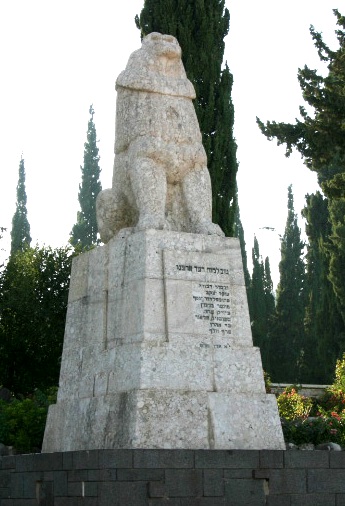
March 1 1920 – 11 Adar 5680
Tel Hai was abandoned. In 1905 the first Jewish pioneers arrived to cultivate fields purchased from the village of Al-Khalisa by Baron Rothschild’s Palestine Development Fund. A farm built around a courtyard was set up in 1907, and after the Ottomans retreated from the area at the end of World War One, it was renamed Tel Hai. The Sykes-Picot agreement, in which England and France divided up the Middle East between them, awarded the area of Tel Hai and the Galilee Panhandle to the French. Arab unrest and irresolute enforcement of French rule resulted in rioting, with attacks on French troops as well as on Jewish villages in the Galilee, seen as an extension of colonial expansion. The attacks on Tel Hai began in December 1919, resulting in groups of volunteers under Joseph Trumpeldor’s command being sent to reinforce the few permanent residents.
On March 1 1920, armed Bedouin demanded entry to Tel Hai, ostensibly to ensure there were no French soldiers inside. Going up to the second floor of the main building, they opened fire on the young Jewish residents. A gunfight ensued, and an Arab mob gathered outside the settlement burst into the courtyard and joined the battle. With heavy casualties, no chance of reinforcements and no hope of a positive outcome, those surviving left Tel Hai for nearby Kfar Giladi. Trumpeldor, decorated veteran of the Russo Japanese war, founder of the Zion Mule Corps that fought in the Gallipoli campaign in World War I and of the Jewish Legion, was wounded in the struggle and died on the way to Kfar Giladi. Dr. Geri, the doctor attending him, testified to his last words: “No matter, it’s good to die for our country.” Schneur Sepusnik, Aaron Sher, Sarah Chisick, Deborah Drachler, Benjamin Monter, Jacob Toker and Ze’ev Sharf were all killed in the battle at Tel Hai. They were buried between the two settlements, and a statue of a roaring lion, itself now an iconic symbol of Jewish bravery, was placed over the graves. Tel Hai’s historic courtyard has been restored and is now a museum. The nearby town of Kiriat Shemona was name for the eight young men and women killed at Tel Hai.
